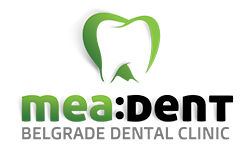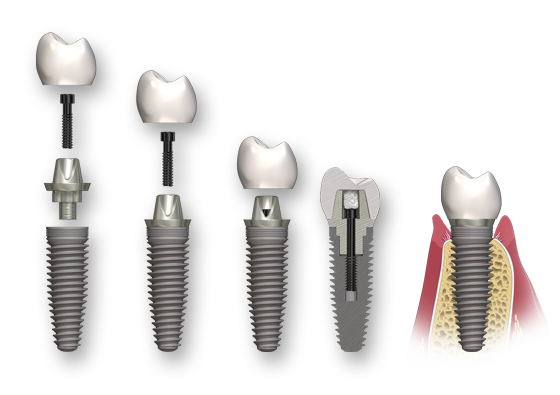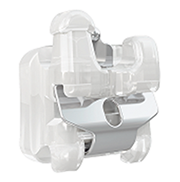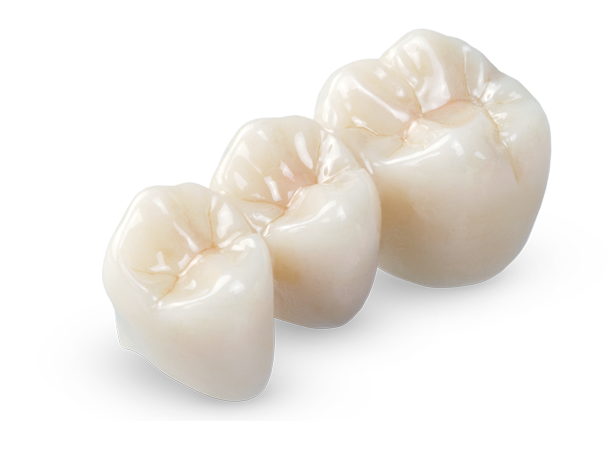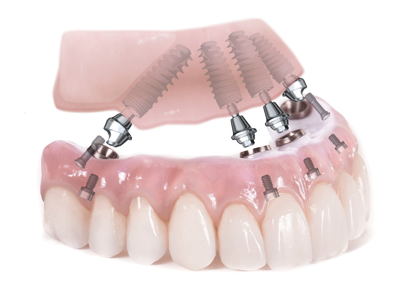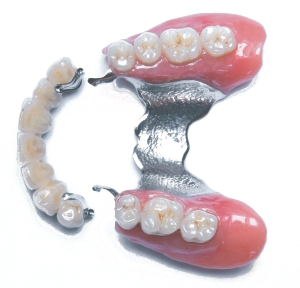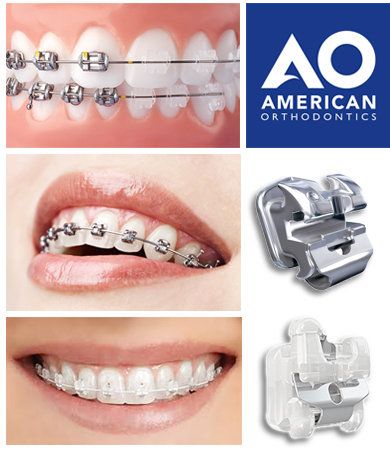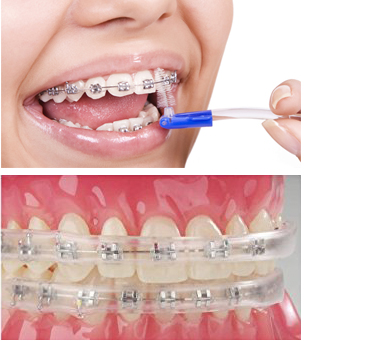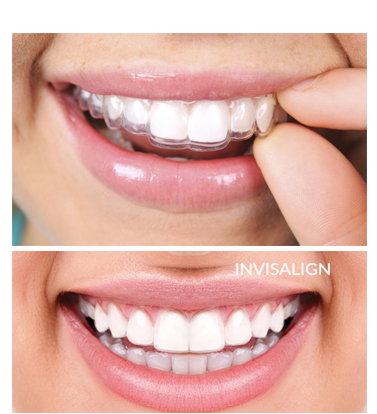ORTHODONTICS
What is actually orthodontics and what is its main goal?
Orthodontics is the field of dentistry dealing with correction of misalignment in teeth and jaws position, also known as maloclussion. In the period of mixed dentition, when there is a presence of primary and permanent teeth, a desired effect can be achieved with mobile (removable) appliances, and in the period of permanent dentition with fixed appliances.
The goal of orthodontic therapy is to achieve aligned and aesthetic appearance of the bite, which will enable an optimal chewing function and redistribution of forces so that equal bearing of all teeth is achieved. In addition, with correct teeth position, oral hygiene is easier and thus the risk of developing tooth decay and periodontal diseases is reduced.
Orthodontics mislead
Sometimes the patient does not want to go through a long procedure of teeth correction, but instead he chooses to correct teeth and bite position in 7 days by filing down of teeth and placement of ceramic crowns. There are indications when this is actually possible and when it is not possible. The extreme misalignment in teeth and gums position and large gaps between the adjacent teeth would aesthetically give very limited results with not so insignificant consequences.
This is why, above all, we recommend the fixed apliances therapy. After concluded therapy, the patient and the dentist jointly make a decision if it is also necessary to include prosthodontics. It was not a rare case that the fixed apliances therapy gave such a great result that the patient decided not to proceed with prosthodontics.
FIXED ORTHODONTIC THERAPY
Fixed orthodontic appliance consists of tubes or rings which are placed on the first permanent molars, the brackets which are bonded to each single tooth and the archwire which goes through the central slot of the brackets. Archwires in the central slot of the brackets can be held by the wired or rubber colored ligatures and in this case, we are talking about conventional brackets.
More modern and for patient certainly more comfortable solution are the self-ligation brackets. These brackets do not have rubber ligature which can retain food particles and which are difficult to maintain. Self-ligating fixed appliance has brackets which hold the archwire in the slot with a clip, which opens and closes. Due to their mechanical properties, these brackets reduce the overall duration of the treatment.
In addition to this classification into conventional and self-ligating, there is also a classification into aesthetic and metal brackets. Brackets are placed on teeth exclusively by the orthodontic specialist and the patient can not remove them. Check ups are done every 4-6 weeks. Which brackets will be placed depends on a case-by-case, the wish of the patient and of course the price.
In our dental clinic we use the best technology and the most modern brackets manufactured by the company American Orthodontics. We will therefore choose what is the best solution for you, depending on your case.
The placement of a fixed appliance in one jaw is completely painless and takes about 45 minutes to be done.
Hygiene maintenance and advices
Fixed appliance requires more time and effort because the elements (brackets), which are bonded to the teeth, hinder proper hygiene. The teeth should be brushed after every meal because the food retains on the tubes and brackets. In addition to the classical toothbrushes, you should also use interdental toothbrushes which are smaller, and can clean the spaces between teeth and brackets. There are many products on the market designed specifically for orthodontic patients. After placement of a fixed appliance, the teeth will be sensitive and you may feel a discomfort for a few days. This is completely normal and it occurs as result of the force applied to the teeth.
There is also a possibility of irritation of mucous membranes of cheek and lips, which may be prevented by placing a protective wax or silicone over the brackets or wires which irritate you. Tooth movement (oscillation) is normal occurrence and you should not be worried. Avoid food which sticks to the teeth and brackets (caramels, chewing gum). Also pay a special attention to the hard food and nuts because they could detach the tube and the bracket. You should not tear anything with your teeth, and the food should be cut into small pieces and chewed slowly.
Retaining the teeth position (RETENTION)
After the completion of orthodontic treatment, comes the retention phase, which is equally important as wearing a fixed appliance. The patient receives a retention device, which can be fixed or mobile, for keeping the teeth in the corrected position. Mobile retainer can be transparent foil which you wear in the first year, every night and as many hours during the day as possible. Fixed retainer has wire connections 3-3 down and 2-2 up. If you do not wear your mobile retainer after removing the fixed appliance, teeth will start moving over the next 12 months. This happens because the periodontal fibers tend to return the tooth to its original position, as the bone tissue around the tooth is not mineralized and the tooth is still not used to the new force.
If you do not wear your retainer, we can not guarantee you the stability of the results. Failure to follow the instructions on the retention, increases the probability of RECURRENCE!
MOBILE ORTHODONTIC APPLIANCE
Mobile appliances are intended for the youngest patients who are still growing and developing. They are made for only one of the jaws (active panels) or for both jaws (activator, bionator). Patients put them in and take them out of the mouth by themselves. It should be noted that when wearing the removable orthodontic appliance, cooperation and the desire of the child to wear the appliance is extremely important for success of the therapy. The appliance is worn for minimum of 14 hours a day. It has a screw which is rotated in consultation with an orthodontist every 7 to 10 days. Mobile appliances can not properly and fully correct heavily rotated or tilted teeth, neither the teeth that have grown on the wrong place. For such cases the fixed orthodontic appliances should be used.
Treatment with mobile orthodontic appliances is mainly the first phase of treatment that begins at an early age and by which the position of the jaws is corrected. After that, a fixed appliance should be placed, which corrects the position of teeth and completes the treatment. If the problem is not resolved at a young age, it becomes more difficult over time.
On the first visit to the dentist, you need to do a 2D panoramic x-ray of all teeth, then a lateral cephalogram and then the dentist takes dental impressions. The procedure is short, extremely simple and painless. Based on these 3 parameters, orthodontic specialist will do analysis, and in only a few days appropriate orthodontic appliance will be made.
INVISALIGN FOILS FOR TEETH CORRECTION
The correction of teeth with INVISALIGN foils presents an alternative to fixed brackets – plastic aligner (transparent foil) is made to correct teeth and arrange them correctly in pre-designed position. Each set of aligners is precisely designed with a software, based on dental impression taken in our dental clinic.
Aligners are designed to correct lighter, moderate and severe orthodontic cases. In addition to being aesthetically acceptable because they can not be noticed at all, they have many other benefits. They are significantly easier to maintain than fixed appliances which are impossible to be removed and washed properly. With foils, this is possible, and therefore the oral and teeth hygiene is much better. Forces applied to the teeth are distributed over the whole surface of the tooth, and not only on the surface of the bracket. If this would be an appropriate solution for your case, it remains to be determined, after detailed analysis.
For best results, you must be fully dedicated to the plan of the treatment, which means that the aligner should be worn for as long as it is determined by the dentist. For actual results, it is necessary to wear aligner for a minimum of 16-18 hours per day.
Based on the dental impression we can make a 3D computer animation, and based on this we can determine how many aligners would be necessary to correct the teeth, as well as how it would all look at the end of the therapy. In the end, the final decision is up to you. The appointment and consultation are certainly free of charge and the further analysis costs 30 euros. If you decide to do the foils, the cost of analysis shall be included in the price of the foils.
